From pictures below you may see a resemblance to olives and blueberries. In fact, this plant family is closely related to the blueberry family (Ericaceae). The fruits are often edible and attractive to wildlife, especially birds, who disperse the seeds. The family is not extremely large but it is intriguing for its edible fruits, magic seeds, and artsy flowers. Read on…
Bushfood
First, what is a quandong? For that we must travel to Australia and the surrounding islands…
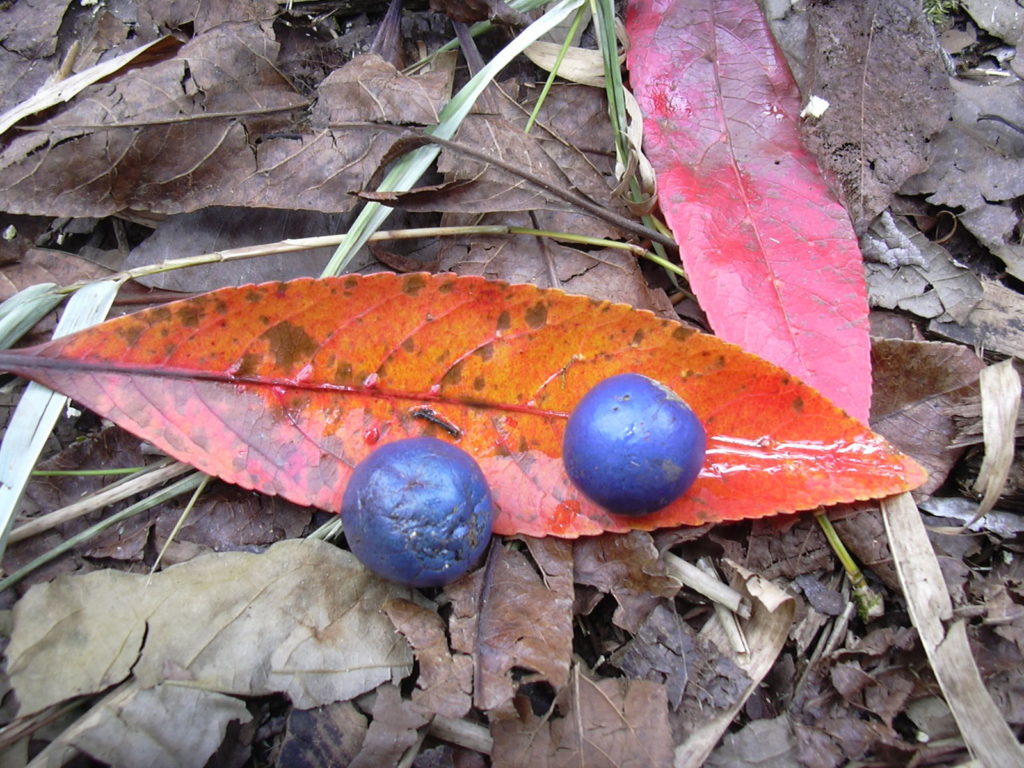
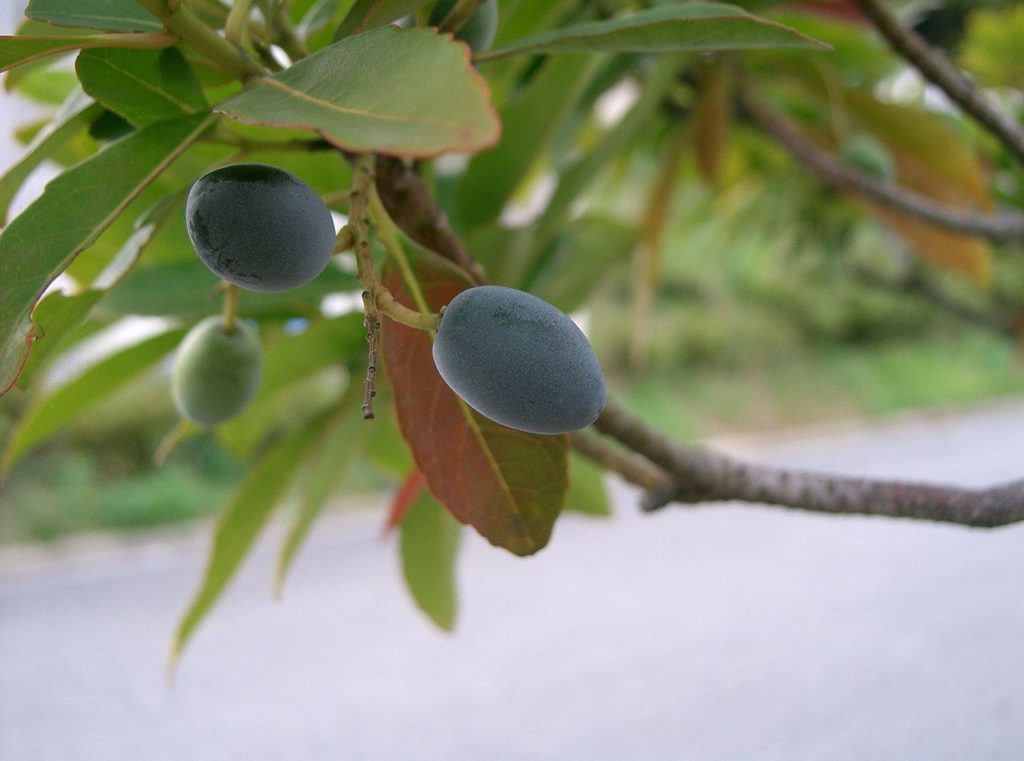
Quandongs, with their blue fruits, are attractive to birds and people alike. They are one of the many bushfoods of this region, which refers to native food eaten by both indigenous peoples and settlers. For example, the seeds of the Kuranda quandong (Eleaocarpus bancroftii) were eaten by indigenous Australians after cracking open the tough shell with “nut” and “hammer” stones which are found throughout former settlements. White or blue quandong (E. grandis) is also an indigenous Australian food and jewelry source; early settlers also used its fruit for preserves. Bower birds collect the stones for their displays. It should be noted that another fruit is more commonly called quandong (desert quandong, Santalum acuminatum) in this region and is a different species from another plant family.
Apart from quandong, there are other edible fruits in this family. Studies have shown several species in this family to have antioxidant and active anti-inflammatory activity. For example, maqui berries have been touted as the new superfruit. They come from the Chilean wineberry plant (Aristotelia chilensis) and have been studied scientifically for their anthocyanin and antioxidant content. Most of the harvest is done from wild trees by families who collect them near the Andes Mountains and then sell them in local markets.

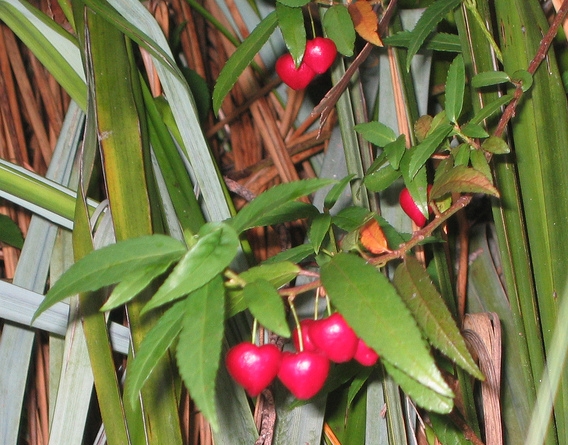
Other wineberries exist such as the mountain wineberry (Aristotelia australasica). The wineberry, or in the Māori language makomako, has many uses, including as a source of blue-black dye, charcoal, traditional medicine, and food from the berries eaten whole or made into juice. The genus was named in honor of Aristotle.
Magic Fruits
The seeds of this family, particularly Elaeocarpus which makes up the bulk of the family, have significant magico-religious symbolism and are highly sought after for these as well as aesthetic purposes. They are made into jewelry, rosaries, and more. They also have traditional medicinal uses such as in Ayurveda, acupuncture.
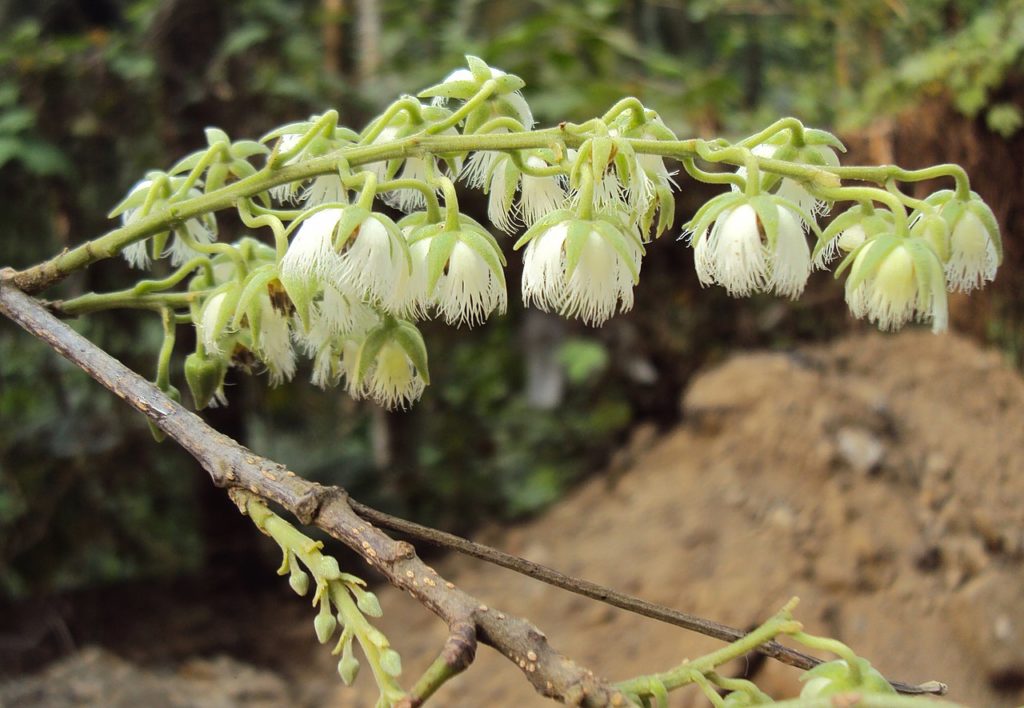
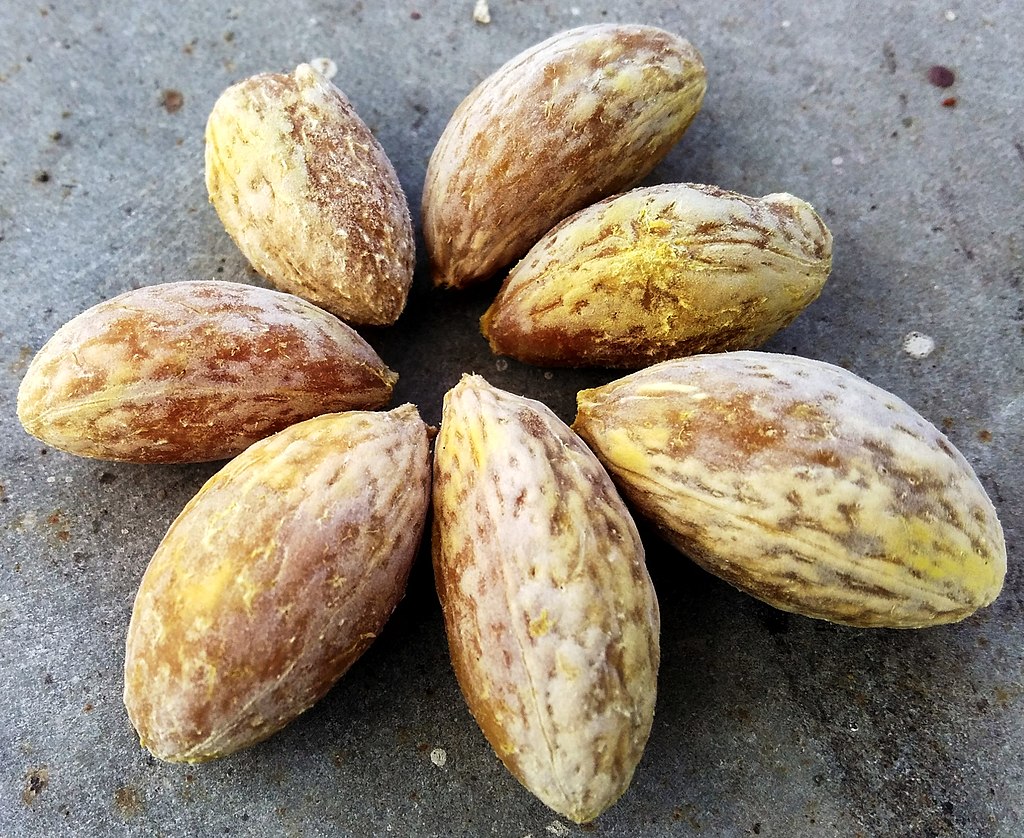
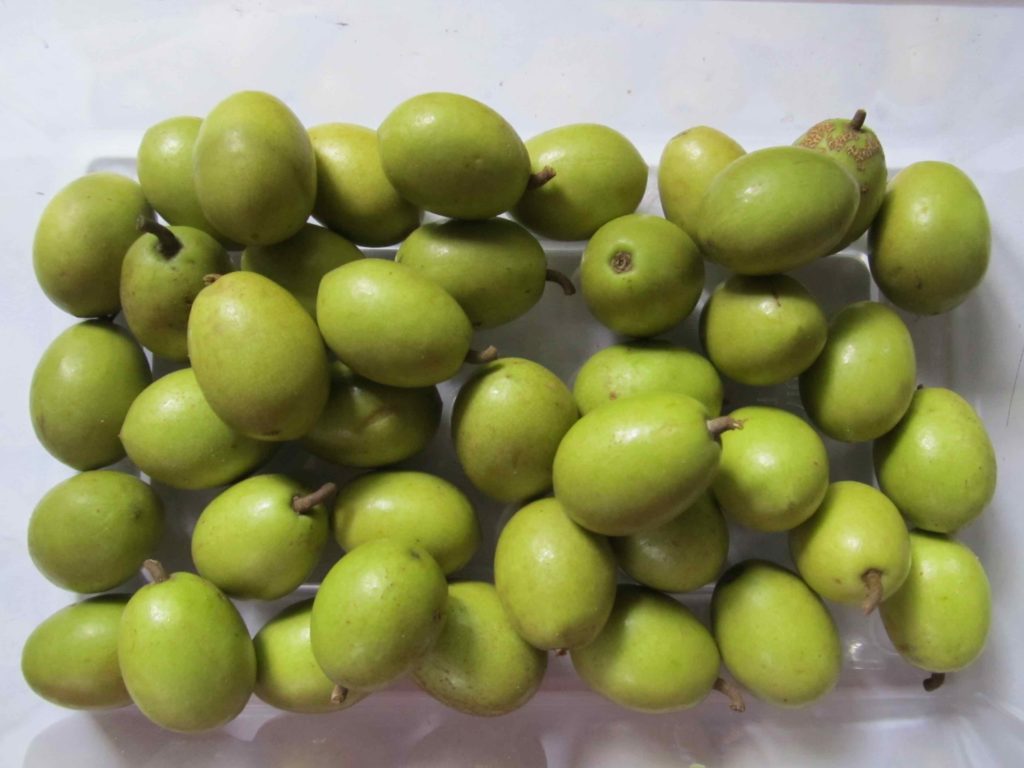
The name of its genus, Elaeocarpus, comes from the Latin elaeocarpus meaning olive-seed. Ceylon olives (Elaeocarpus serratus) are used for religious and folk medicinal purposes as well as for the edible fruit, which are pickled in Sri Lanka as a popular street food. In a religious sense, the fruit was believed to ward off evil in India. Several folk medicinal uses have been recorded as well. Elaeocarpus calomala, from the Philippines, is used to create religious images called santo.
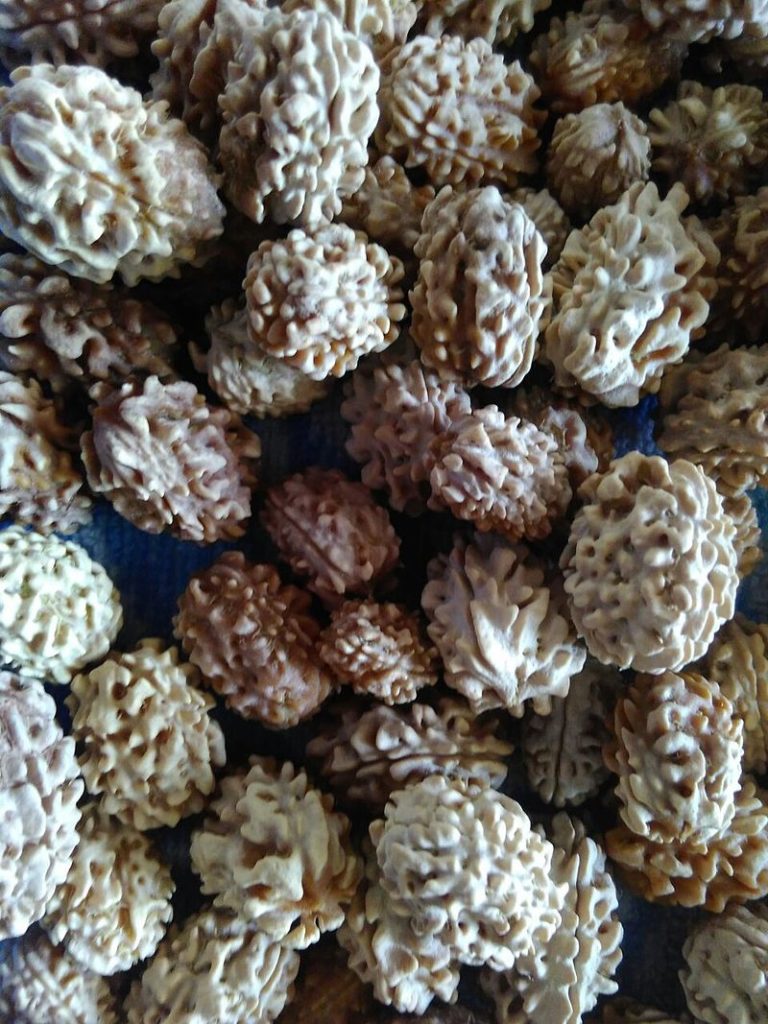

The stones at the center of the blue fruits of the utrasum bean tree or Indian bead tree (E. angustifolius) are used as prayer beads and garlands in India; the name of the beads, rudraksha, translates to “Rudra’s [Shiva] teardrops” or “eyes” in Sanskrit. The stones themselves contain segments of seeds. Variations in the number of facets to the stone can command higher prices and value, with smaller stones with more facets commanding higher prices. The tree is widely distributed through southeast Asia, Australia, and the Pacific Islands. “According to Hindu mythology, people believe that, anyone who wears rudraksha beads gets mental and physical powers” (Prasannan et al., 2020)
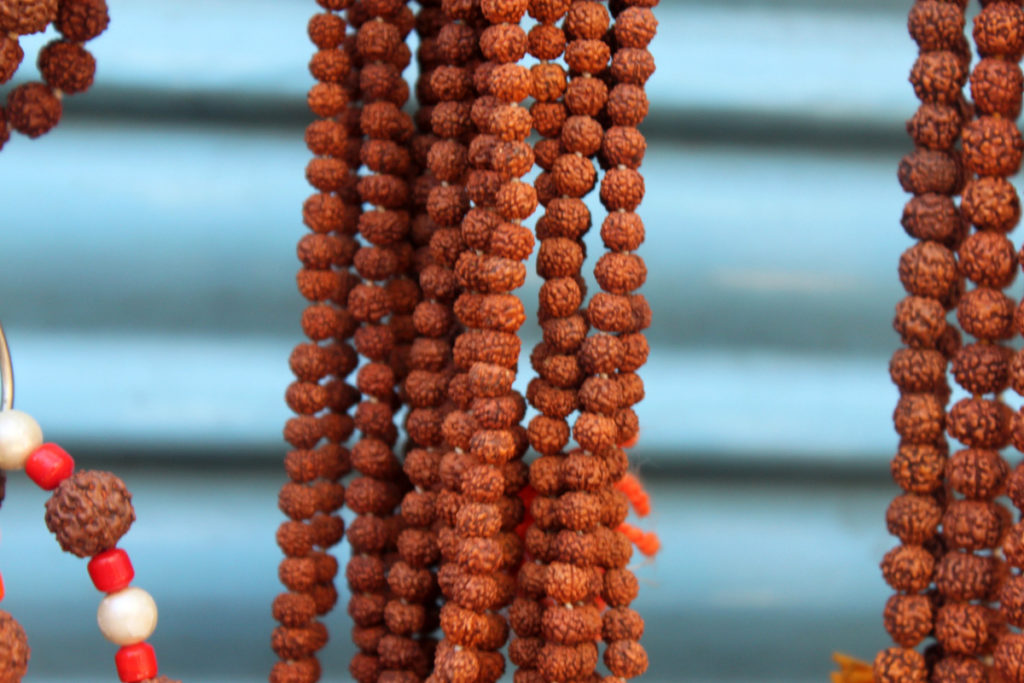
Artsy Flowers
Sometimes it’s nice to appreciate plants on an aesthetic level for the beautiful art they provide us. This family treats us to some fun, festive, and often fringe-y flowers. Enjoy!
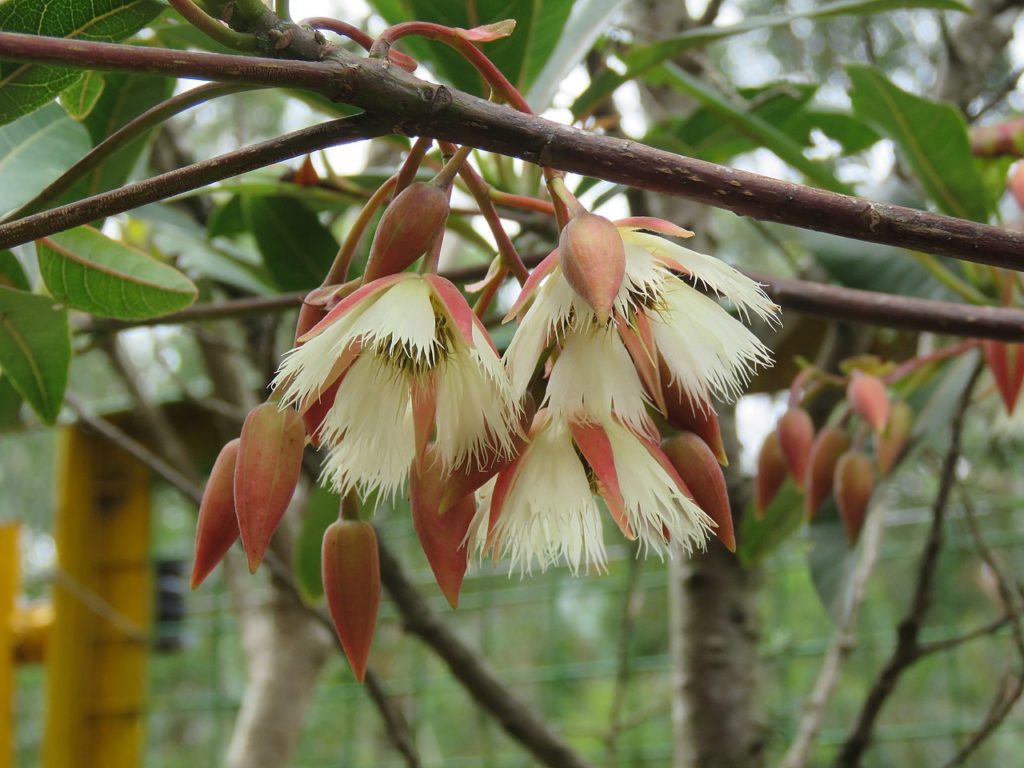
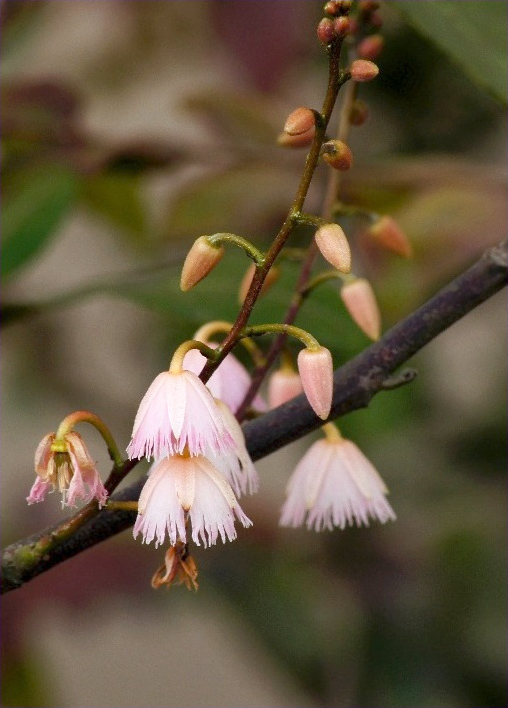
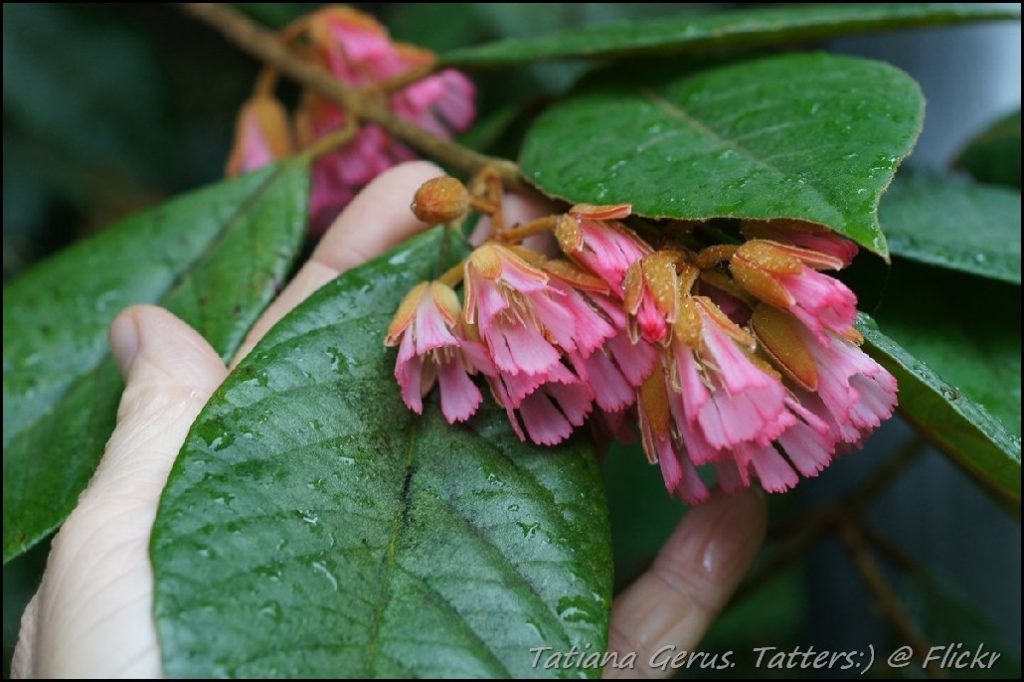

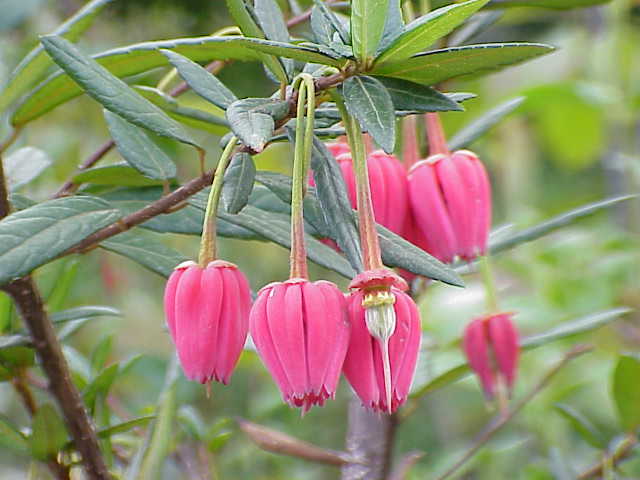

References
Prasannan, P., et al. (2020). A review on taxonomy, phytochemistry, pharmacology, threats and conservation of Elaeocarpus L. (Elaeocarpaceae). The Botanical Review, 86, 298-328.

